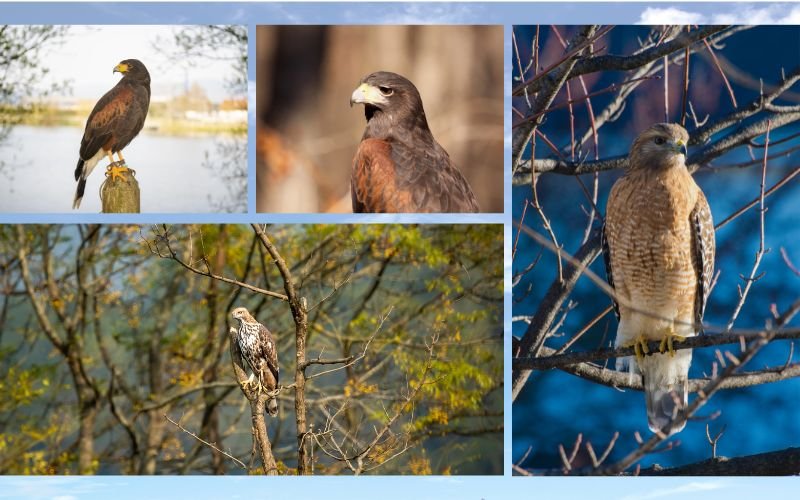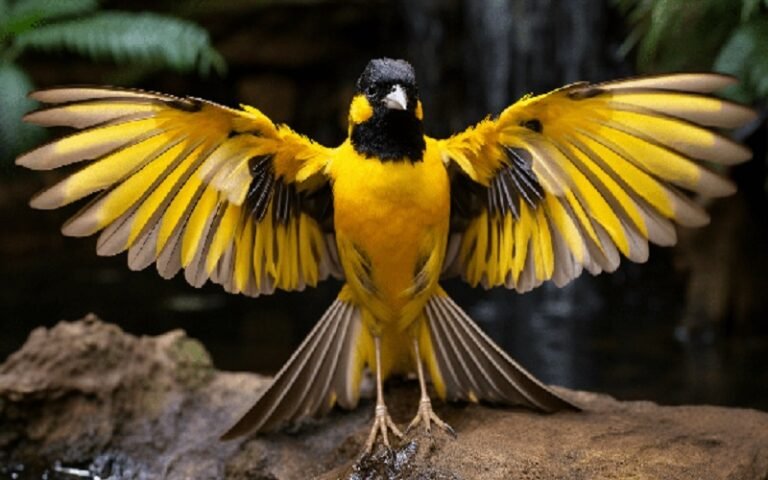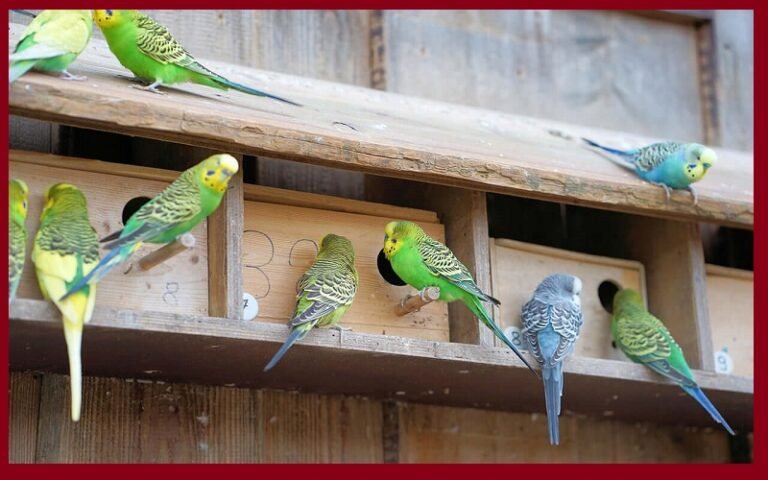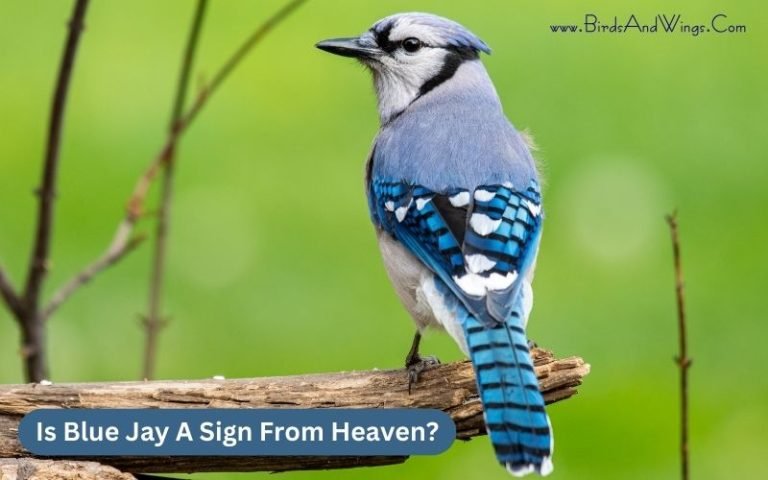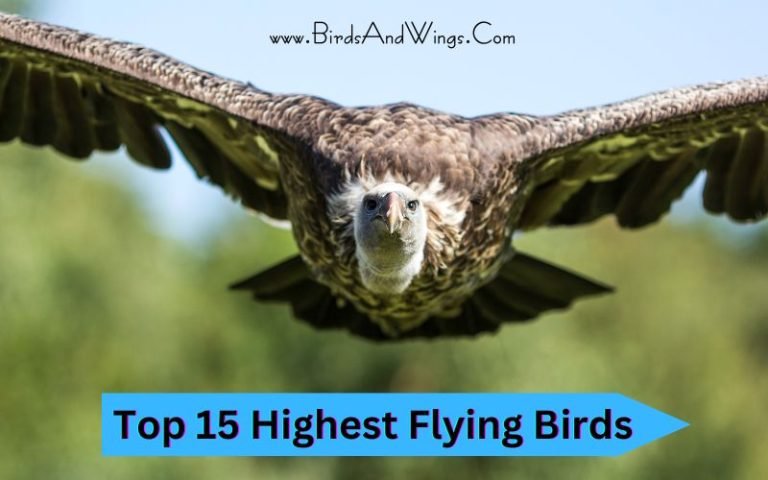Top 15 Species of Hawks in Missouri
Missouri, a state in the midwestern region of the United States, is a diverse place for avian species, especially for hawks.
Like Oklahoma and Georgia, Missouri is home to around 400 to 900 avian species in North America. During the summer season, you can easily spot these hawks.
I’m going to provide the top 15 hawks in Missouri state, along with their physical characteristics, such as scientific names, lifespan, native place, size, wingspan, diets, distributions, habitat preferences, and other facts about them.
All this information will help you spot the Hawks in Missouri.
Top 15 Species Of Hawks In Missouri
Missouri is densely populated with diverse hawk species. If you visit Missouri once in your lifetime, you are likely to encounter these beautiful hawk species personally.
I will describe these species’ physical characteristics, different distributions, habitat places, food habits, and other behaviors, along with other attributes, which will give you a closer idea about these species’ lifestyles.
1. Red-Tailed Hawk

- Scientific name: Buteo jamaicensis
- Lifespan: around 10 to 12 years
- Wingspan: about 110–141 centimeters (3 ft 7 inches – 4 ft 8 inches)
- Native to: North America
- Size: 18 to 24 inches
- Food and diet: small animals, rodents, lagomorphs, reptiles, fish, invertebrates, lizards, mouse
Similar to their names, red-tailed hawks have wide red tails and brownish-black plumage. They are local and common birds in North America, including Missouri state in summer.
These hawk birds are mostly partial migrants, which means they travel within their range, including Canada and Alaska. However, you can find them in mixed forest areas, fields, woodlands, tall trees or high bluffs.
They also prefer these places for nesting and perching. Similarly, they might inhabit wetlands, mountains, grasslands, and agricultural fields. As birds of prey, they hunt their food and consume it.
Their diet includes small mammals, fish, birds, reptiles, snakes, rodents, mice, and lizards. Their breeding season starts in late February and lasts until December.
During their courtship performance, they dangle their legs, touch each other’s wings, or do cartwheels together. These hawks also have excellent flight capabilities.
Through the time of their flying, you can hear their soaring and flapping sounds from the sky, which helps them conserve their energy.
2. Sharp-shinned Hawk

- Scientific name: Accipiter striatus
- Lifespan: average 3-5; individual 13 years
- Wingspan: 42 to 58 cm (17 to 23 in)
- Native to: America, the United States, Canada
- Size: 23 to 30 cm (9.1 to 11.8 in)
- Food or Diet: Birds like songbirds, sparrows, wood-warblers, finches, and thrushes, as well as lizards, snakes, frogs, insects, and rodents.
The sharp-shinned hawks identify as northern hawks and are small from other hawk species. Adult sharp-skinned hawks have brown and black plumage over their body.
Their wings, heads, and foreheads are black beside their cheeks, and their breasts are brownish white with orange Irish. If you closely observe, you can see that they have short wings and medium-sized tails compared to other hawks.
These hawks are widely common in North America, Central America, and South America, including the United States and Canada. Their preferred habitat is woodlands and forest-type areas in Missouri.
If you visit Missouri, you can find these hawks regarding their habitat places. They even have special hunting techniques where they kill or catch the prey from dense vegetation while flying quickly.
These sharp-shinned hawks can fly up to 300-3000 m ( 980- 9840 ft) above the sea surface. During their nesting season, These species build their nests with a stick in deciduous or dense forests.
Male hawks in Missouri also become very protective and defend their territory during the breeding season. They also bring food for their partners while the female hawks incubate the eggs.
3. Cooper’s Hawk

- Scientific name: Accipiter cooperii
- Lifespan: up to 8 years
- Wingspan: 84 cm (33 in)
- Native to: North America
- Size: 35-46 cm
- Food or Diet: small birds, mammals, bats, mice, squirrels, chipmunks, reptiles and insects
Cooper’s hawks are medium-sized in Missouri, so you should spot them. Although you can spot them in Missouri, their breeding regions cover Canada and northern Mexico.
These hawks in Missouri prefer deciduous forests and mixed forests, especially foothills and mountainous regions, conifer forests, woodlands, farmlands, and floodplains for their habitats.
Adult hawks have gray and reddish plumage on their body with long gray tails and black banding. Their tails have white features on the edges, and their face is pale, with a black cap and red Irish.
These hawks’ bills are slightly hooked and have a yellowish-black color. You will be amazed that their bills are so strong that they can tear any flesh of the prey within a minute with those bills.
They also have unique vocalizations because they can make 40 different voices and variations during their breeding seasons. You’ll notice that the harsh voices are from the male hawks, who have more harsh and loud voices than the female hawks.
They also have special techniques for hunting their prey. If they see birds flying across the trees, they do not go directly to hunt them; rather, they circle around the whole place and bushes and then launch an attack on their prey.
4. Northern Goshawk

- Scientific name: Accipiter gentilis
- Lifespan: about 11 years
- Wingspan: around 43 to 50 inches (108 to 127 centimeters)
- Native to: North America
- Size: 18 to 25 inches
- Food or diet: small birds including reptiles, snakes, lizards, frogs, rodents
Northern goshawks are a combination of Eurasian and American goshawks. Both species are native to North America, including Europe, Asia, Spain, France, Great Britain, Morocco, Tibet, the Himalayas, Oklahoma, and Missouri.
Both species of hawks tend to inhabit wooded areas, hardwood forests, and forests with certain trees. Just like Cooper’s hawks, these hawks also become more vocal during their courtship days and start producing repetitive sounds.
If you eagerly want to see their behavior during the breeding season, you can go in March and April, which are the times of their breeding season.
During incubation days, male birds go outside to find food for their mothers. These species also become bold and aggressive; sometimes female hawks get extremely aggressive if male hawks do not bring food during courtship days.
Sometimes, their aggressive behavior causes their partner’s death. These hawks use their nests for several years and tend to grow bigger in every breeding and nesting season.
5. Red-shouldered Hawk

- Scientific name: Buteo lineatus
- Lifespan: around 20 years
- Wingspan : around 90 to 127 cm (35 to 50 inches)
- Native to: North America, California, Mexico
- Size: 15 to 23 inches
- Food and diet: small mammals, rodents, voles, gophers, mice, moles, chipmunks, reptiles, snakes, birds and insects
Red-shouldered hawks are medium-sized hawks widely distributed in North America, from California to Northeastern central Mexico, including Florida and the Gulf Coast.
Close observation shows that these species have brownish heads and reddish lower parts, with a dark brown and white pattern in the wings. In the winter, these red-shouldered hawks migrate from Okaloosa, Ohio, to the Gulf Coast for breeding.
Again, you might find them if you go to woodlands, hardwood stands, or open subcanny areas in Missouri. But don’t go to the deep forest areas because they are rarely found there.
Similarly, for their breeding seasons, these hawks prefer mixed wooded areas near watery places. Their mating or breeding season starts between April and July.
They usually build their nests with sticks, barks, leaves, etc. These Missouri hawks also repeat their nests with the same mating partners for several years.
During mating time, hawks produce harsh sounds to protect their nests and territories. Female hawks lay eggs and incubate for 28 to 33 days. After hatching, the young start to leave their nests around six weeks ahead.
6. Rough-legged Buzzard

- Scientific name: Buteo lagopus
- Lifespan: around 19 years in the wild
- Wingspan: around 120 to 153 centimeters (47 inches to 60 inches)
- Native to: North America, Europe, Russia
- Size: 18 to 27 inches
- Food and diet: Small mammals, insects, reptiles, rabbits, mice, rats, gerbils, pikas, shrews, squirrels etc.
Rough-legged buzzards, or rough-legged hawks or falcons, are medium-sized hawks in Missouri. Apart from Missouri, these hawks are also local to North America’s Arctic and subarctic regions.
If you observe these species in Missouri, you will find their whole bodies covered in brown and white plumage with a black beak. In winter, these rough-legged hawk species migrate to southern Europe and Asia.
Their breeding season starts between April and March in an open place or open ground held between April and May. During winter, these hawks travel to marshes and agricultural places, mostly to search for food.
In the agricultural fields in Missouri, you may spot hawks that attack rodents and kill them for their food purposes.
They are also known as aggressive nature birds, among other hawk species in Missouri, for their aggressive attacks on their prey and aggressive defense of territories.
These species are loyal to their partners and choose one mating partner for several years.
7. Broad-winged Hawk

- Scientific name: Buteo platypterus
- Lifespan: around 12 years
- Wingspan: around 74 to 100 centimeters (29 inches to 39 inches)
- Native to: North America
- Size: 32 to 44 cm (13 to 17 in)
- Food and diet: insects, amphibians, reptiles, mammals, mice, rabbits, small birds, etc.
You can easily understand that these broad-winged hawks have broadened wings like their names. Generally, these species have a broad wingspan compared to other hawk species in Missouri.
Their broad wings assist them to fly and glide effortlessly without much energy. For their appearances, you’ll notice that these species’ upper body parts are dark brown plumage, and the lower parts of the belly and breasts are speckled with a whitish brown color.
They have yellow Irish and yellow legs. Apart from Missouri state, these broad-winged hawks are largely distributed in North America, South America, Canada, British Columbia, and Texas.
Later, they migrate to Florida, Mexico, and northern South America in the winter season. You can spot their breeding areas if you visit the northern and Eastern parts of North America.
These hawks migrate or travel with groups of 40 other hawk species in Missouri. Sometimes, they even migrate in flocks with thousands of birds at 550-1300 m above the Oceans.
Male Missouri hawks perform courtship rituals such as cartwheels, dives, and aerial acrobatics to attract mating partners. These broad-winged hawk species can survive without water for several days.
If these hawk species cannot find drinking water, they can survive by consuming their prey’s water from their body.
8. Swainson’s Hawk

- Scientific name: Buteo swainsoni
- Lifespan: average 10 years; maximum 26 years
- Wingspan: 46-54 inches
- Native to: North America and South America
- Size: 17-22 inches
- Food or Diet: insects, dragonflies, bats, crickets, rodents, mice, reptiles, small birds, vertebrates, squirrels etc.
Swainson’s hawks are also known as grasshopper hawks or locust hawks in Missouri state. By their names, you can clearly predict that these species of hawks are very fond of eating insects or Acrididae in their diets.
Apart from Missouri state, these Swainson’s hawks are also native species of North America and South America in different seasons. Their breeding area covers south-central Alberta, Alaska, Yukon, Washington, California, Arizona, and Texas.
These hawks are found in the North American regions in summer and spring and in South America in winter.
These Missouri hawks tend to inhabit open and semi-open places like deserts, grasslands, wheat fields, and alfalfa fields. The species has two individual colors: light morph and dark morph.
Maximum Swainson’s hawks, around 90% of them consist of light morph color variation on their body. You will easily recognize these light morph hawks by their white belly part with dark spots, slightly reddish chests, and white throats and faces.
Beside the body, their tails are gray-brown with six narrow bands. On the contrary, the dark morph hawks have dark brown bodies apart from the light patch below their tail and lighter reddish underparts.
These Missouri hawks use several hunting techniques to hunt their prey. They patrol open areas or places for their prey and sometimes also scan from a perch position.
9. Osprey

- Scientific name: Pandion haliaetus
- Lifespan: 7- 10 years
- Wingspan: 127–180 cm (50–71 in)
- Native to: north america, gulf coast, Florida, Alaska; except Antarctica
- Size: 50–66 cm (20–26 in)
- Food or Diet: prime food: fish; also eat rodents, frogs, birds, hares, rabbits, mammals, snakes etc.
Osprey hawks, known as sea hawks, river hawks, or fish hawks in Missouri for being the bird of prey. If I talk about their physical appearances, the lower parts of their bodies are deep, glossy brown with white breasts.
Their heads are white with a dark brown patch across the eyes. They have golden to brownish eyes along with black bills. They also have short tails and narrow wings that look finger-fleamed.
During different seasons, osprey hawks are mostly common in tropical regions such as North America, Alaska, Newfoundland, the Gulf Coast, Florida, and Finland.
Their breeding season varies across the region. In southern Australia, it starts in September to October. It starts between April and May in northern Australia, and in southern Queensland, it starts around June to August.
However, don’t go to Antarctica, as these Missouri hawks are common in every region except Antarctica. To find their nests, you can go to watery places, as they build their nests beside watery places, which are the best habitats for them.
These hawks in Missouri made their nests with large heap sticks, driftwood, turf, tree forks, rocky outcrops, etc. These osprey hawks generally prefer their mate for their whole lives, which means they like to be with their one partner for their whole lives until and unless their partner is dead.
After having successful breeding seasons, female ospreys lay 2-4 eggs in the nests and raise their young there.
10. Northern Harrier

- Scientific name: Circus hudsonius
- Lifespan: around 16 years
- Wingspan: around 32.8 to 40.6 centimeters (12.9 inches-16.0 inches)
- Native to: Northern hemisphere in Canada, northernmost USA
- Size: 41–52 cm (16–20 in)
- Food and diet: songbirds, small rabbits, doves, insects, reptiles, snakes, lizards, etc.
Northern Harriers are familiar as marsh hawks and ring-tailed hawks in Missouri. Apart from Missouri state, you can spot them in northern parts of the northern hemisphere, Canada, and the northernmost USA.
These Missouri harriers live in the United States of America, mostly in the North, Mexico, and Central America. In the winter season, they travel to the southern US. You can easily recognize them because of their white-collar rings around their necks and brownish-black bodies.
Again, These species are fond of open areas, marshes, and woodlands for their habitats. If you visit these places you have a high chance to encounter these beautiful hawks personally.
These species of hawks do not remain with one mate for whole breeding seasons; rather they have been spotted to change their mates up to 5 five times in one breeding season.
Female hawks in Missouri build their nests with grass, sticks, and leaves on the ground or on dirt or vegetation. They lay 4 to 8 eggs in the nests and incubate them for 31 to 32 days.
The male hawks feed the young after their hatching. Later, the child will leave the nest at around 36 days of hatching.
11. Ferruginous Hawk

- Scientific name: Buteo regalis
- Lifespan: around 20 years
- Wingspan: 122 to 158 cm
- Native to: North America
- Size: 20 to 28 inches (average 23 inches)
- Food or diet: jackrabbits, squirrels, pocket gophers, rats, mice, small birds, mammals, reptiles like snakes, lizards and insects
Ferruginous hawks are also known as Ferruginous rough-legged hawks in Missouri, and they have few similarities to rough-legged hawks.
During their breeding seasons, these hawks are also native to the North American region, including Arizona, New Mexico, Utah, Canada, Washington, and Missouri.
You can easily find them in open places, grasslands, cottonwoods, willows, and swamp oaks for their habitats. However, you will not find them in cultivated areas and modified grasslands during their breeding seasons because they avoid these places at that time.
Moreover, these hawks travel a decent distance of about 1.6 km to a maximum of 6.4 km from other raptor birds’ nesting sights. You can fully recognize these Missouri hawks by their white underparts, red plumage on the back and shoulders, and gray heads.
Both male and female ferruginous hawks have quite similar features, apart from their size, because female hawks are a little larger than male ones.
These Missouri hawks have excellent flight skills with slow wing beats during soaring positions.
Conclusion
To sum up, with the thoughts, Missouri state is highly populated with these different species of hawks and their habitats.
Different hawks occupy different seasons throughout the year because of this state’s ecological environment, balanced diets, and secure breeding and nesting sites.
If you visit Missouri, you can easily spot these hawks and learn about their food habits, behavior, adaptation quality, and other attributes from this article.
Likewise, hawks in Maryland and Oklahoma have an equal balance of environment and diverse richness. Knowing these hawks will help you learn about these raptor birds as birds of prey, their lifestyle, and their survival tactics through nature.

